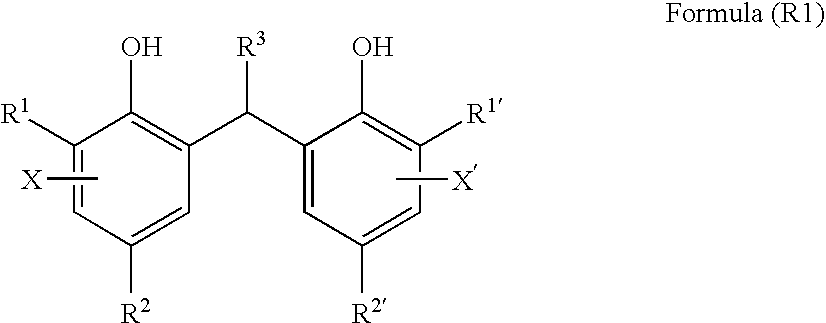Photothermographic material and image forming method
- Summary
- Abstract
- Description
- Claims
- Application Information
AI Technical Summary
Benefits of technology
Problems solved by technology
Method used
Image
Examples
example 1
(Preparation of PET Support)
[0667]1) Film Manufacturing
[0668]PET having IV (intrinsic viscosity) of 0.66 (measured in phenol / tetrachloroethane=6 / 4 (by weight ratio) at 25° C.) was obtained according to a conventional manner using terephthalic acid and ethylene glycol. The product was pelletized, dried at 130° C. for 4 hours, and melted at 300° C. Thereafter, the mixture was extruded from a T-die and rapidly cooled to form a non-tentered film.
[0669]The film was stretched along the longitudinal direction by 3.3 times using rollers of different peripheral speeds, and then stretched along the transverse direction by 4.5 times using a tenter machine. The temperatures used for these operations were 110° C. and 130° C., respectively. Then, the film was subjected to thermal fixation at 240° C. for 20 seconds, and relaxed by 4% along the transverse direction at the same temperature. Thereafter, the chucking part of the tenter machine was slit off, and both edges of the film were knurled. The...
example 2
1. Preparation of Sample Nos. 23 to 26
[0837]Preparation of sample Nos. 23 to 26 was conducted in a similar manner to the process in the preparation of sample No. 10 of Example 1 except that the reducing agent-1 and reducing agent-2 are removed and the compound of formula (R1) shown in Table 7 was used instead.
2. Evaluation of Performance
[0838]Evaluation was performed similar to Example 1.
[0839]As a result, further improvements on Dmax and on image storability in a dark and hot place are obtained by using the compound represented by formula (R1).
TABLE 7CompoundImageof FormulaCoatedStorability inSample(R1)SurfaceDark and HotNo.No.(g / m2)FogSensitivityDmaxGranularityStatePlaceNote23R1-10.720.1711054.510.0016◯82Invention24R1-110.780.1721034.490.0016◯85Invention25R1-310.900.1711044.500.0017◯86Invention26R1-360.960.1721024.490.0017◯88Invention
example 3
1. Back Layer
[0840]To 830 g of methyl ethyl ketone, 84.2 g of cellulose acetate butyrate (trade name: CAB381-20, manufactured by Eastman Chemical Co.) and 4.5 g of polyester resin (trade name: Vitel PE2200B, manufactured by Bostic Co.) were added while stirring and allowed to be dissolved.
[0841]Next, to the solution were added 0.30 g of infrared dye-1 and a solution obtained by dissolving 4.5 g of fluorocarbon surfactant (trade name: Surflon KH40, manufactured by Asahi Glass Co., Ltd.) and 2.3 g of fluorocarbon surfactant (trade name: Megaface F120K, manufactured by Dainippon Ink and Chemicals, Inc.) in 43.2 g of methanol, and the mixture was stirred sufficiently to obtain a solution.
[0842]Then, 75 g of silica particles (trade name: Sylysia 450, manufactured by Fuji Silysia Chemical Co., Ltd.) dispersed in methyl ethyl ketone at a concentration of 1% by using a dissolver type homogenizer was added thereto, and the resulting mixture was stirred. Thereby, a coating solution for the ba...
PUM
 Login to View More
Login to View More Abstract
Description
Claims
Application Information
 Login to View More
Login to View More - R&D
- Intellectual Property
- Life Sciences
- Materials
- Tech Scout
- Unparalleled Data Quality
- Higher Quality Content
- 60% Fewer Hallucinations
Browse by: Latest US Patents, China's latest patents, Technical Efficacy Thesaurus, Application Domain, Technology Topic, Popular Technical Reports.
© 2025 PatSnap. All rights reserved.Legal|Privacy policy|Modern Slavery Act Transparency Statement|Sitemap|About US| Contact US: help@patsnap.com



